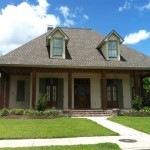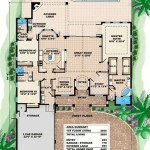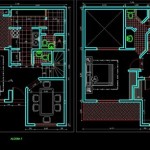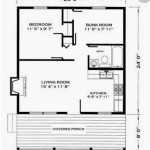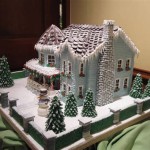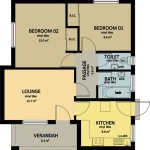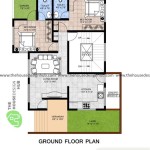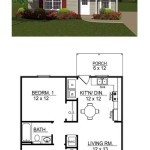Homes With Lofts: Exploring Floor Plans and Design Considerations
Loft spaces offer a unique blend of charm and functionality, adding architectural interest and versatile living areas to homes. Understanding the different types of loft floor plans and their design considerations is crucial for maximizing their potential.
Key Characteristics of Loft Spaces
Loft spaces are typically characterized by high ceilings, open floor plans, and large windows. These features contribute to a sense of airiness and spaciousness. Historically, lofts were converted industrial spaces, retaining elements like exposed brick or ductwork. Modern lofts, however, are often incorporated into new construction, offering a contemporary take on the classic loft style.
Common Types of Loft Floor Plans
Various loft floor plans cater to diverse lifestyles and needs. Some popular configurations include:
Full-Floor Lofts: These occupy an entire floor of a building, often in converted industrial structures. Full-floor lofts offer maximum flexibility in terms of layout and design, frequently featuring open-plan living areas, multiple bedrooms, and ample storage space.
Half-Floor Lofts: As the name suggests, these occupy half of a floor, providing a more manageable living space while still retaining the characteristic high ceilings and open feel. They are often found in renovated buildings and offer a balance between spaciousness and affordability.
Condo Lofts: These are lofts incorporated into condominium developments. They offer the benefits of loft living within a managed complex, typically including amenities like shared gyms, rooftop terraces, and security services.
Studio Lofts: These compact lofts combine living, sleeping, and kitchen areas within a single open space. While smaller in size, studio lofts maximize vertical space with the loft area often serving as the bedroom.
Design Considerations for Loft Floor Plans
Designing a loft space requires careful consideration of several factors to optimize functionality and aesthetics. Key design elements include:
Maximizing Natural Light
Large windows are a hallmark of loft spaces, providing ample natural light. Maintaining an open floor plan helps distribute this light throughout the space. Skylights can further enhance natural illumination, particularly in areas farther from exterior walls.
Defining Functional Zones
While open-plan living is a defining feature of lofts, strategically defining functional zones is essential. This can be achieved through the use of furniture placement, area rugs, varying floor finishes, and changes in ceiling height.
Privacy in Open Spaces
Balancing the openness of a loft with the need for privacy requires thoughtful planning. Partial walls, strategically placed bookcases, or curtains can create visual separation without sacrificing the airy feel. The loft area itself can serve as a private bedroom or home office.
Optimizing Vertical Space
The high ceilings of lofts provide an opportunity to maximize vertical space. The loft area itself can be utilized for a variety of purposes, such as a bedroom, office, or storage. Built-in shelving and vertical storage solutions can further enhance functionality.
Staircase Design for Loft Access
The staircase leading to the loft is a prominent design element. Choosing the right style and materials can significantly impact the overall aesthetic. Spiral staircases offer a space-saving solution, while traditional staircases can provide additional storage underneath.
Material Selection and Finishes
The selection of materials and finishes contributes to the overall ambiance of the loft. Exposed brick, concrete floors, and metal accents can create an industrial chic look. Alternatively, incorporating wood flooring, softer textures, and warmer colors can create a more cozy and contemporary feel.
Incorporating Storage Solutions
Effective storage is crucial in maximizing the functionality of a loft. Built-in shelving, under-stair storage, and strategically placed closets can help keep the space organized and clutter-free.
Furniture Selection and Placement
Choosing the right furniture for a loft requires careful consideration of scale and proportion. Opting for furniture that is appropriately sized for the space will prevent it from feeling overwhelmed. Strategic placement of furniture can also help define functional zones and create a sense of flow.
Integrating Technology and Smart Home Features
Integrating technology and smart home features can enhance the functionality and convenience of a loft. Smart lighting, automated window treatments, and integrated sound systems can be seamlessly incorporated into the design.

Small Cottage Floor Plan With Loft Designs

20 House Plans With Lofts Tiny Small Luxury Designs Blog Homeplans Com
Small Cabin House Plans With Loft And Porch For Fall Houseplans Blog Com

Loft Cabin Tiny House Floor Plans Design Small

Pin On Casa Arquitectura

Small Cabin House Plans With Loft And Porch For Fall Houseplans Blog Com

Small Cabin Designs With Loft Floor Plans House Plan
Small Cabin House Plans With Loft And Porch For Fall Houseplans Blog Com

20 House Plans With Lofts Tiny Small Luxury Designs Blog Homeplans Com

Small Cottage Floor Plan With Loft Designs House Plans

